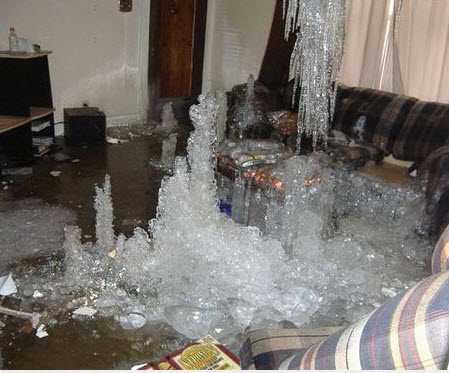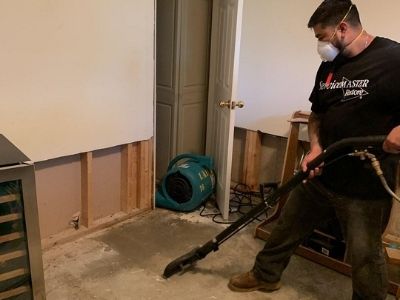The Art of Swift Response: Identifying and Fixing a Burst Pipe
The Art of Swift Response: Identifying and Fixing a Burst Pipe
Blog Article
Were you in search of facts around How to install a dishwasher safely?

A burst pipe is a significant emergency; you can just stand as you see water you pay dearly to reunite with the planet. In even worse situations, you observe a swimming pool on your kitchen area flooring, which is a wonderful journey threat, specifically if you have youngsters around. If the pipeline that ruptured remained in your walls, problem: you might need to paint that whole section.
Exactly how can a disaster like a ruptured pipeline be protected against and managed? Well, by listening to your professional emergency plumbings as well as complying with these guidelines.
Exactly how do I recognize when my pipelines have ruptured?
Rising and fall water stress
Pipelines do not simply burst in a day. You might have seen that your kitchen faucet or shower does not run immediately when you turn the faucet. It may pause for a few seconds and then blast you with even more pressure than common.
In various other instances, the water may seem regular in the beginning, after that decrease in stress after a few seconds.
Wet walls and water stains
Prior to a pipeline ruptureds, it will certainly leakage, a lot of times. If this consistent dripping goes unnoticed, the leak may graduate into a wide gash in your pipeline. One very easy means to prevent this emergency is to keep an eye out for wet walls ad water stains. These water discolorations will certainly lead you right to the leakage.
Puddles under pipes and sinks
When a pipe ruptureds, the discharge develops a puddle. It may show up that the pool is growing in size, and also despite the number of times you mop the puddle, in a couple of minutes, there's another one waiting to be cleansed. Commonly, you might not be able to map the pool to any type of visible pipelines. This is an indicator to call an expert plumber.
Untraceable dripping sounds
Pipeline bursts can happen in one of the most undesirable areas, like within concrete, inside walls, or under sinks. When your home goes silent, you may have the ability to hear an annoyingly relentless leaking sound. Even after you've inspected your shower head as well as cooking area faucet, the dripping might continue.
Dear viewers, the leaking may be originating from a pipe inside your wall surfaces. There isn't much you can do regarding that, except tell a specialist plumber.
Turn off the Water
When water ices up, it expands in quantity by about 9 percent. And also it increases with incredible force: The stress inside pipes might go from 40 pounds per square inch to 40,000 psi! No pipeline can hold that much pressure, so it bursts. The break may take place where the ice types, but more frequently, it occurs where water stress finds a weak point in the pipe. That might be inches or even feet from the icy location. Find the water shutoff valve and switch off the water to prevent even more damage. You might additionally need to turn off the electricity also, relying on where the leaks takes place and exactly how big it is.
Polluted water
Many individuals presume a ruptured pipe is a one-way electrical outlet. Fairly the contrary. As water flows out of the hole or wound in your plumbing system, contaminants discover their way in.
Your water might be contaminated from the source, so if you can, inspect if your water container has any issues. Nevertheless, if your alcohol consumption water is supplied as well as purified by the local government, you ought to call your plumber promptly if you see or smell anything funny in your water.
What do I do when I identify a ruptured pipe?
Your water meter will certainly remain to run even while your water wastes. To reduce your losses, locate the major controls and turn the supply off. The water pipe are an above-ground framework beside your property.
How to Fix & Detect a Leaking Pipe
How Do I Know if a Pipe is Leaking?
Leak detection tests can help you determine if your pipe has a leak. Even if you don’t see an apparent leak, you should still conduct leak detection tests regularly to save water and money—and prevent major damage to your home.
Water meter. It can be helpful to figure out what your usual water meter usage numbers are and then monitor them regularly. To monitor your meter, first, turn off all water faucets in your home. Check the meter and write down the numbers. In a few hours, check the meter again. If the numbers have changed, you have a leak. Water gauge. Use a water gauge to test your water pressure. Your showerhead should produce a certain amount of water pressure based on its model and design. If the pressure is lower than it is supposed to be for that specific showerhead, your home likely has a leak. Puddles. Look inside your bathroom, laundry, and kitchen sink cabinets. Puddles around the cabinets or around toilets, tubs, showers, and washing machines indicate the presence of a leaking pipe. You may also notice loose tiles, peeling or flaking paint, or mold caused by water accumulation. Napkin test. Even if you don’t see any puddles, you may still have a leak. You can test for water leaks in the bathroom, laundry, and kitchen by wiping below-sink connections with a napkin, paper towel, or piece of toilet paper. If it becomes damp, you probably have a leaking pipe under the sink. Discolored walls. Walls that are discolored—usually with brown or yellow stains—or bulging might mean that they have been impacted by water damage caused by a leaking pipe. Smell. A leaky pipe will create sitting water, and over time, that water may develop a musty smell. If your home smells musty, but you can’t locate the source, it may be due to a leak. Steps for Fixing a Leaking Pipe
A leaky drain can be remedied by tightening the pipe base, replacing the drain seal, caulking the rim, and tightening the pipe nut. Similarly, a leaking toilet pipe can be treated by tightening the packing nut. You may also need to replace the valve. A leaky faucet may just need tightening or replacement of the washers. If that doesn’t work, consider replacing your faucet. If your pipe has a hole in it, you may want to use a pipe leak sealer or pipe leak tape. This quick fix for water pipe leaks can also temporarily fix a copper pipe leak. https://www.ahs.com/home-matters/quick-tips/how-to-tell-if-pipes-are-leaking/

We are very fascinated by How to Prepare for Your Dishwasher Installation and I'm hoping you enjoyed the new page. Sharing is nice. One never knows, you may very well be helping someone out. Thanks a bunch for your time. Come back soon.
Additional Resources
Report this page